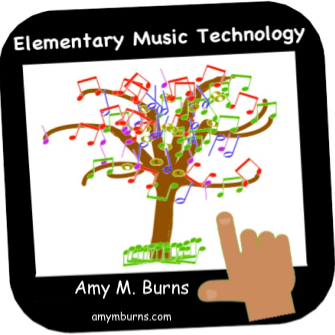If you’re an elementary music teacher gearing up for a new school year, you may be feeling a mix of excitement and overwhelm. Let’s face it—most of us didn’t receive a full toolbox in undergrad, and many times, we’re left to piece things together on our own. But you’re not alone—and you don’t have to start the year on “music teacher island.”
That’s exactly why I’m so excited to share that MusicFirst Elementary (MFE) will be featured at the 2025 Elementary Music Summit®, hosted by ThatMusicTeacher.com! This completely free online event, happening July 7–11, brings together over 30 elementary music experts who will help you walk into the classroom this fall with energy, confidence, and fresh, practical ideas you can use right away.
One of the featured sessions at this year’s summit is called:
“Sing, Move, Play, and Create with MusicFirst Elementary” presented by Dr. Mary Birkner and Melanie Alexander.
If you’ve been curious about MFE—or if you’re looking for a general music curriculum that’s adaptable, engaging, and rooted in active music-making—this session is for you.
What is MusicFirst Elementary?
For the past two years, I’ve used MusicFirst Elementary in my own classroom. It brings together the best of what I’ve gathered over 30 years of teaching elementary general music—blending creativity, structure, and flexibility in one easy-to-use platform.
MFE is built around the National Core Arts Standards and follows a spiral curriculum design, ensuring students are singing, moving, playing, and creating in every unit. Whether you're teaching in-person, remotely, or somewhere in between, MFE has something to offer every classroom and teaching style.
Why Should You Check Out This Session?
In “Sing, Move, Play, and Create with MusicFirst Elementary,” you’ll get a closer look at how the curriculum supports:
🎶 Singing & Active Music Making at the heart of every unit
🧩 Creative Tools like a kid-friendly DAW to compose, score, and explore sound
🎼 High-quality, beautifully scored repertoire that’s developmentally appropriate and fun
🛠️ Customizable lessons and units, so you can tailor content to fit your strengths and your students’ needs
🧑🏫 Teacher-friendly navigation and planning, with clear connections to Orff, Kodály, and other pedagogical approaches
🌍 Engaging content, including seasonal songs, cultural connections, interactive games, and more
You’ll also see how MFE supports organization, sub plans, and fresh repertoire—making it easier to keep your classroom thriving all year long. This session is on Wednesday, July 9, 1:30 PM EST.
Ready to Join Us?
Whether you’re a first-year teacher or a seasoned educator looking to recharge, the Elementary Music Summit is a goldmine of inspiration and support.
🗓️ Dates: July 7–11, 2025
💻 Location: Online (attend from anywhere!)
🎟️ Cost: FREE (with an optional All-Access Pass for extended access and bonuses)
👉 Click here to register for free and learn more!
I hope you’ll explore how MusicFirst Elementary can empower you and your students to sing, move, play, and create like never before. Let’s make this the most musical school year yet!














